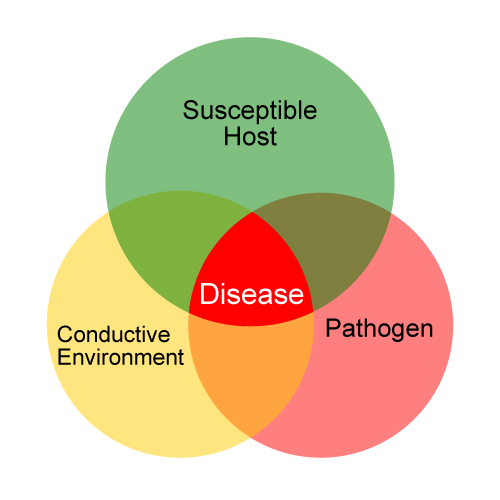News And Advice From The Leading Thousand Oaks Tree Trimming Company
Are the trees in your yard lush and green, or are they plagued with brown leaves and damaged bark — or are they somewhere in between? If yours fall into that last description, it’s good to brush up on some basics to help you diagnose the problem

Trees can be affected by both diseases and insects. We’ll first take a look at diseases and then next month turn to insect problems. In either case, if you notice a problem with your trees, it’s wise to start examining them and taking notes. That’s the first step in selecting an appropriate treatment.
One underlying problem that might make a tree more susceptible to disease is environmental stress. Whether in nature or in your well manicured yard, trees compete for shade, water and nutrients. When a tree does not get these in the proper balance, it can adjust its growth and developmental pattern in response.
Step One: Correctly Identify The Problem
Simple as it sounds, you need to know what kind of tree you have to correctly identify the problem. This is because many diseases only affect certain types of trees. Make sure you know what kind of tree you have and you’ll immediately limit the your list of suspects.
Do you have more than one tree of the same species? If so, does one tree have a problem or do all the trees? This is especially important if only one tree appears to be affected, which points toward a disease. If all trees are affected (including trees of a different type), then signs may point to poor drainage, chemical damage or perhaps weather damage.
Step Two: Look At Your Calendar
When did the problem occur? Did it appear overnight or take a long time to develop? If it showed up almost overnight, disease is less likely to be a problem because diseases typically take time to develop.
What color are your trees roots? If they’re blackish, the problem may be overwatering or a root-rotting organism. If they’re brown, then underwatering may be the problem or it might be a problem with toxic chemicals.
Here in the Conejo Valley we don’t see much damage to trunks and branches caused by weather. After all, ice storms are pretty rare around here! But fire, damage from animals or even damage from power equipment can ding up a tree’s trunk or branches, and that can open up a path for pathogens and wood-rotting organisms. Inspect your tree’s trunk and branches — are they damaged?
Step Three: Take A Close Look
What color are your tree’s foliage? Your tree’s leaves, including the affected leaves, can reveal a lot. If your tree has twisted or curled leaves, the problem may be a viral infection, insect feeding or show that it’s been exposed to an herbicide. If you notice dead leaves at the top of the tree, a likely suspect is environmental or mechanical root stress.
There are three things that must be present for a tree to succumb to a disease. There must an agent that cause the disease (known as a pathogen), your tree must be susceptible to a particular disease and the environment needs to allow the disease to develop.
Trees differ widely, though — some are very hardy and resist disease very well while others are not so hardy. This is actually something you might consider before you plant any new trees — choose a variety that is resistant to diseases common to the Conejo Valley.
If you research diseases, you’ll find they fall into two categories. The first is infectious diseases caused by microscopic living agents. These include fungi, bacteria and viruses. These diseases can be transmitted from tree to tree.
The second type of disease includes those found mostly in suburban areas. Causes of these diseases vary from compacted soil and nutrient deficiencies to temperature extremes and wide variations in watering. One problem with both diseases, however, is that it’s tough to tell the difference between them because the symptoms are often similar. Obviously, though, it’s imperative to figure out the cause in order to determine the right treatment. If you have any doubt about a disease that’s affecting your trees, give us a call — we’re here to help.
Image by Johannes Rössel

